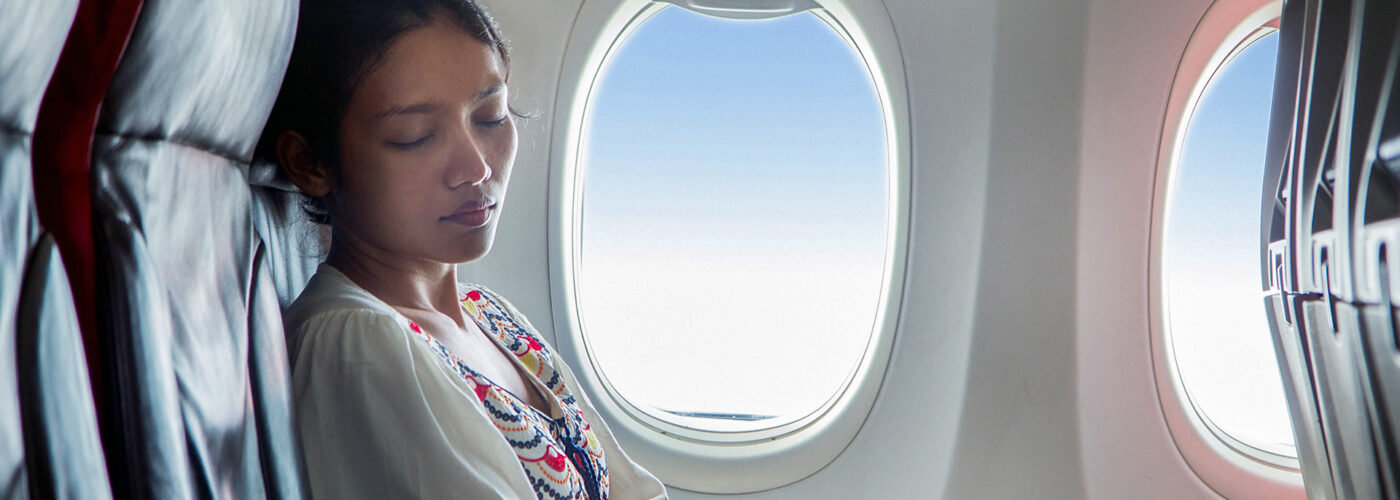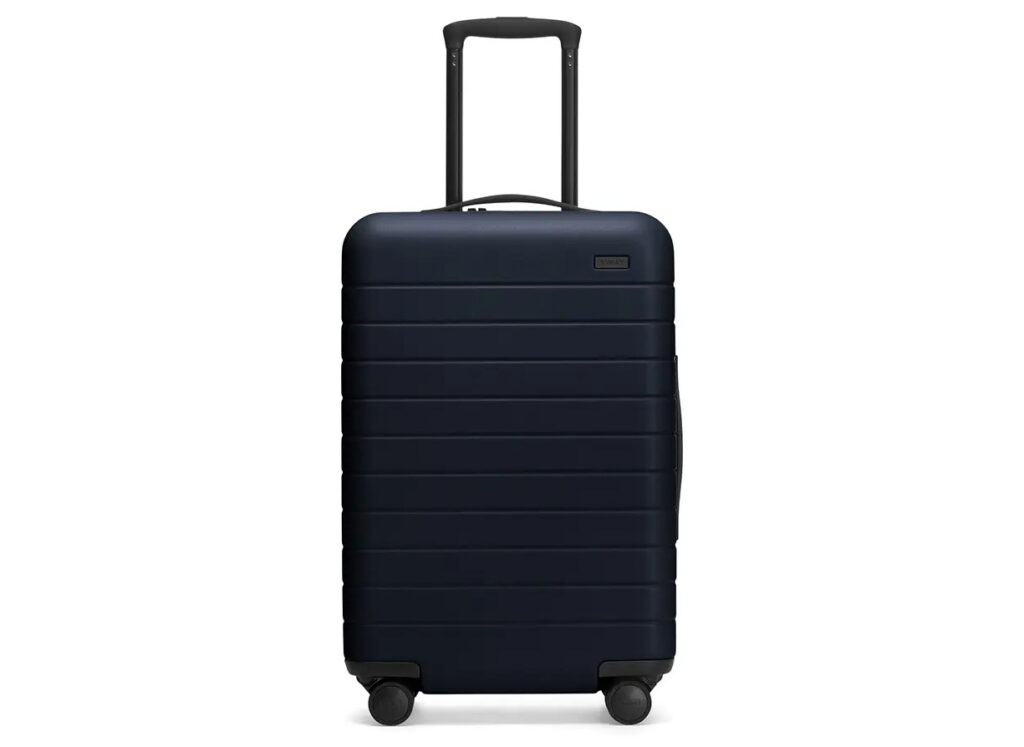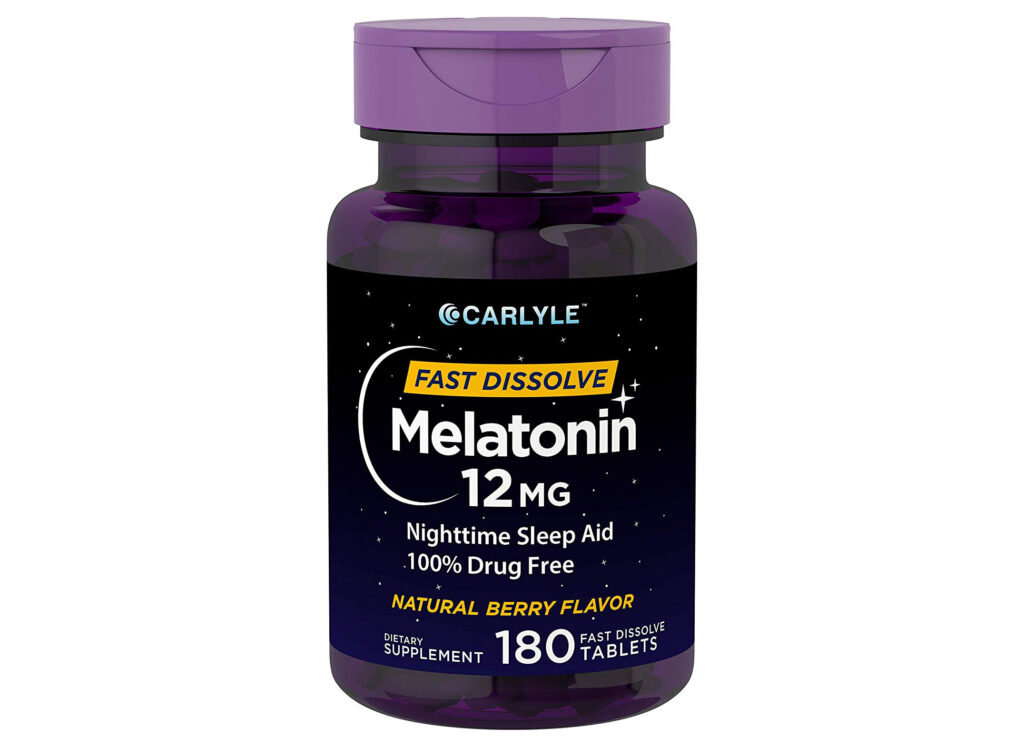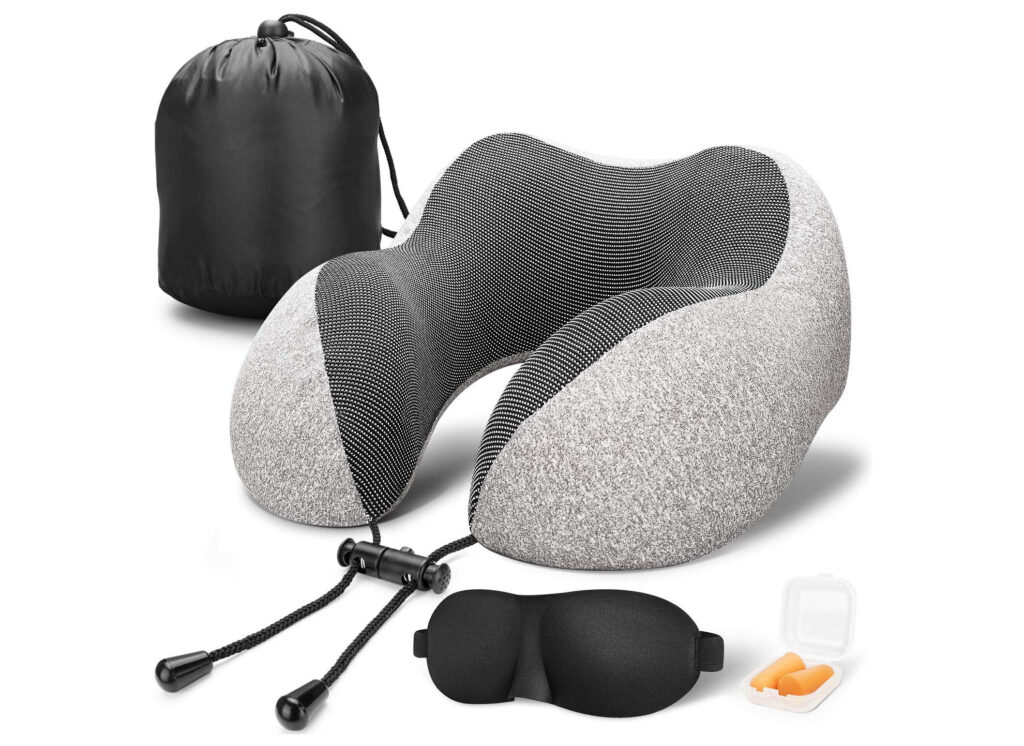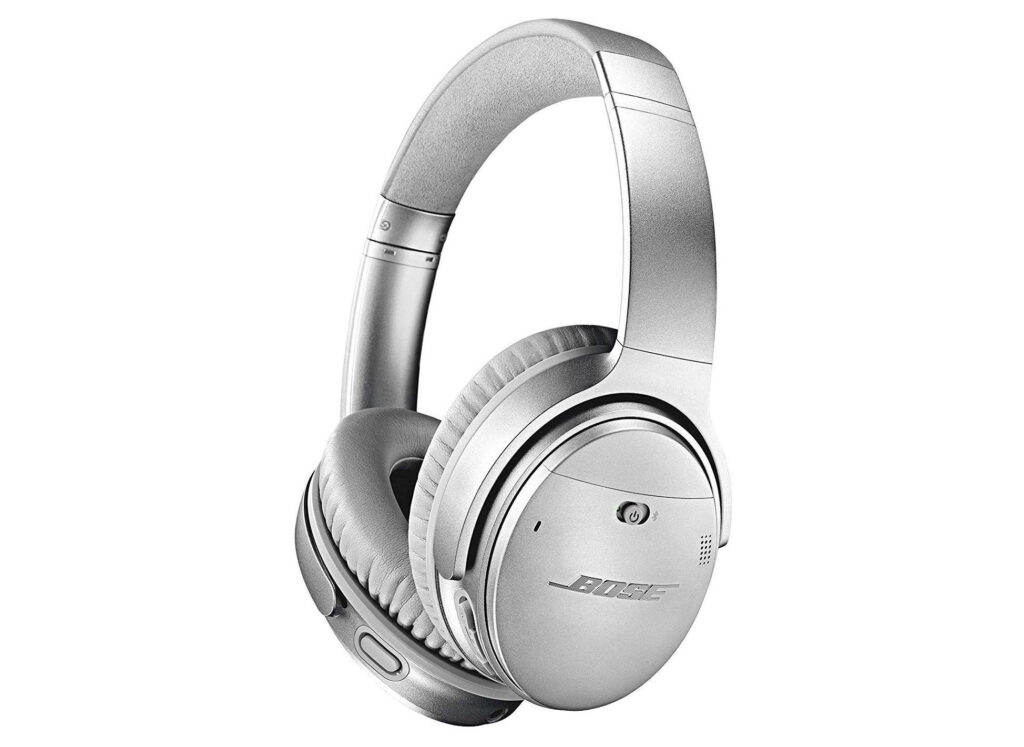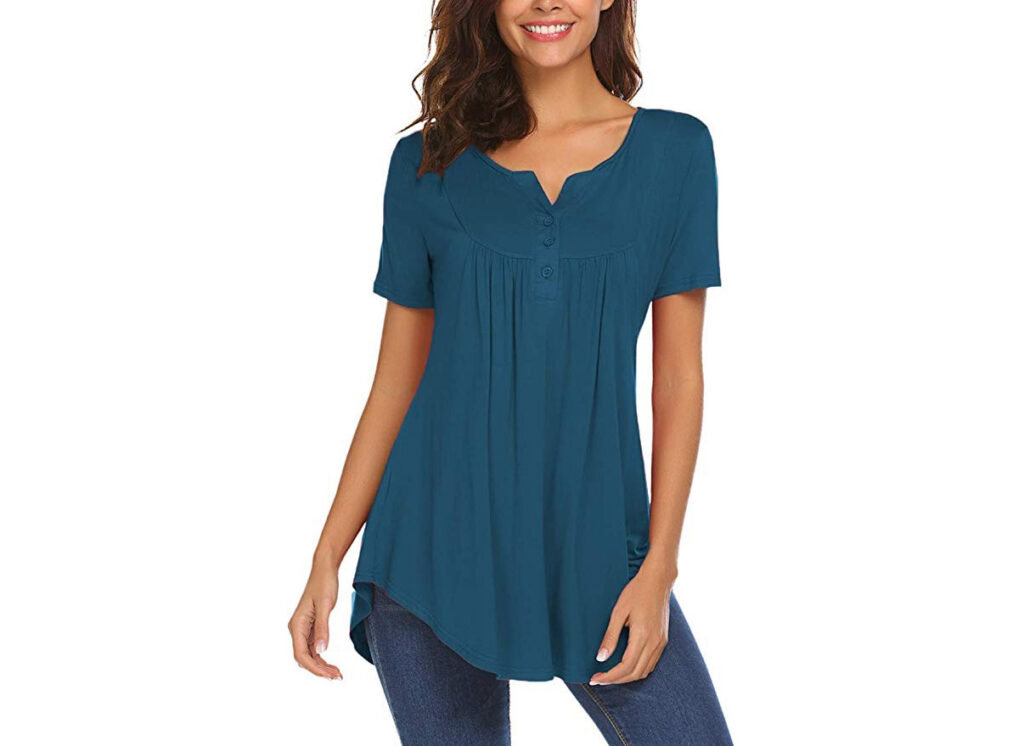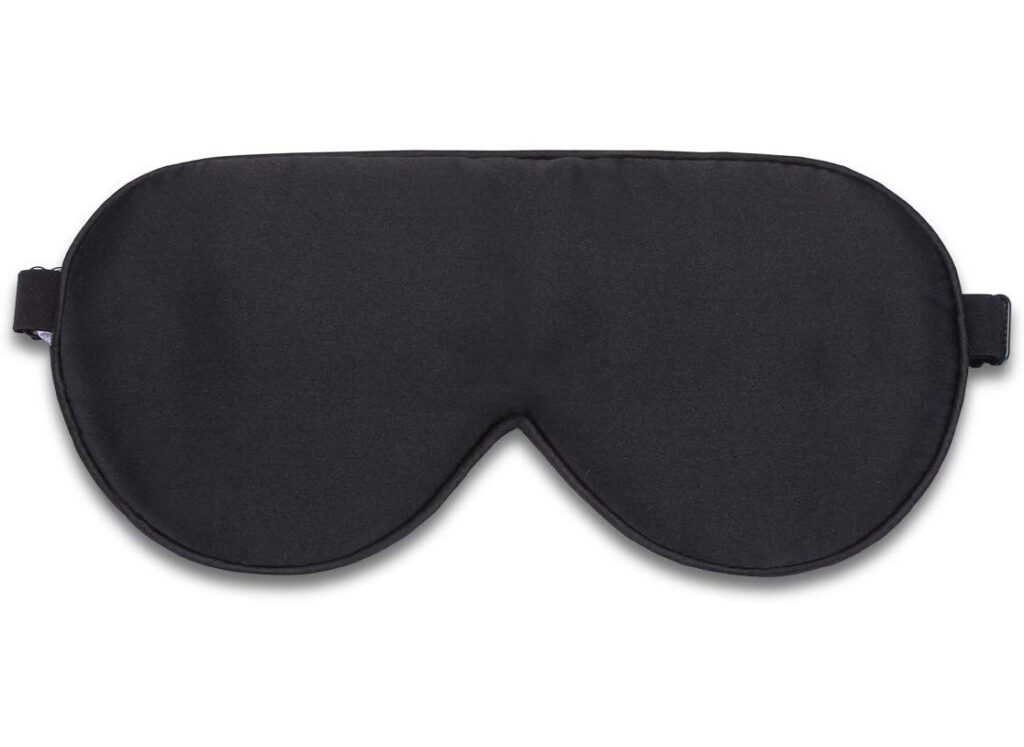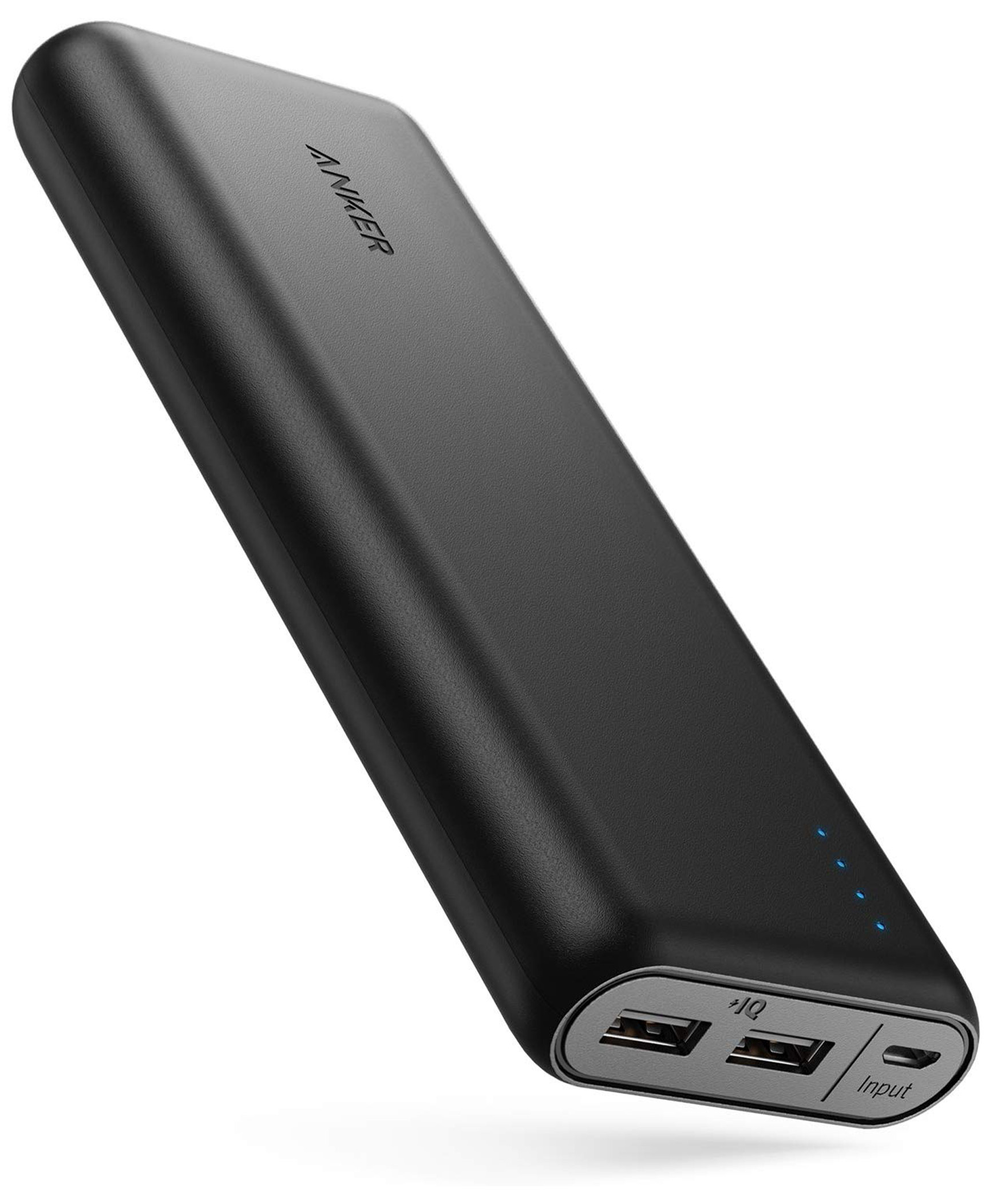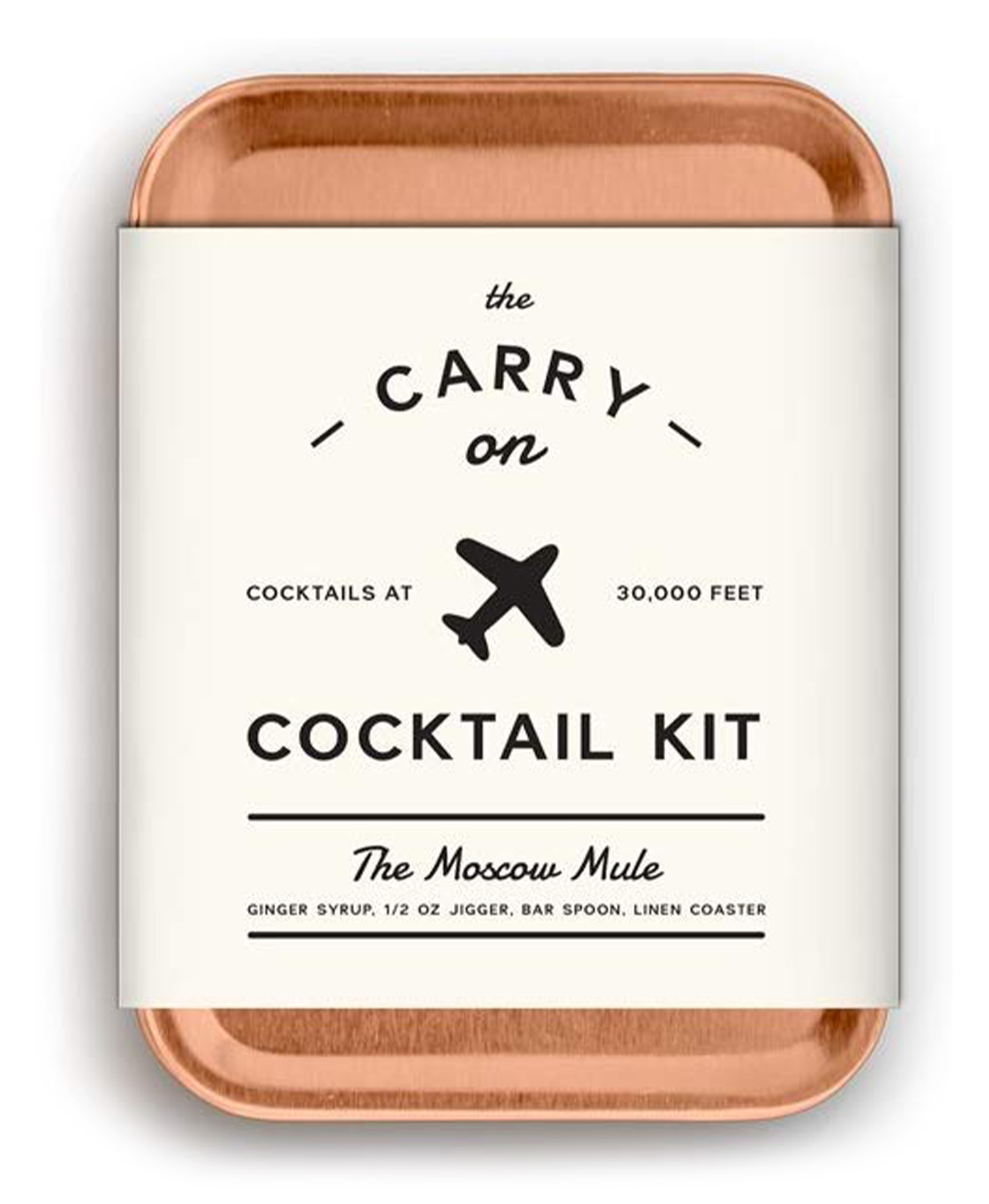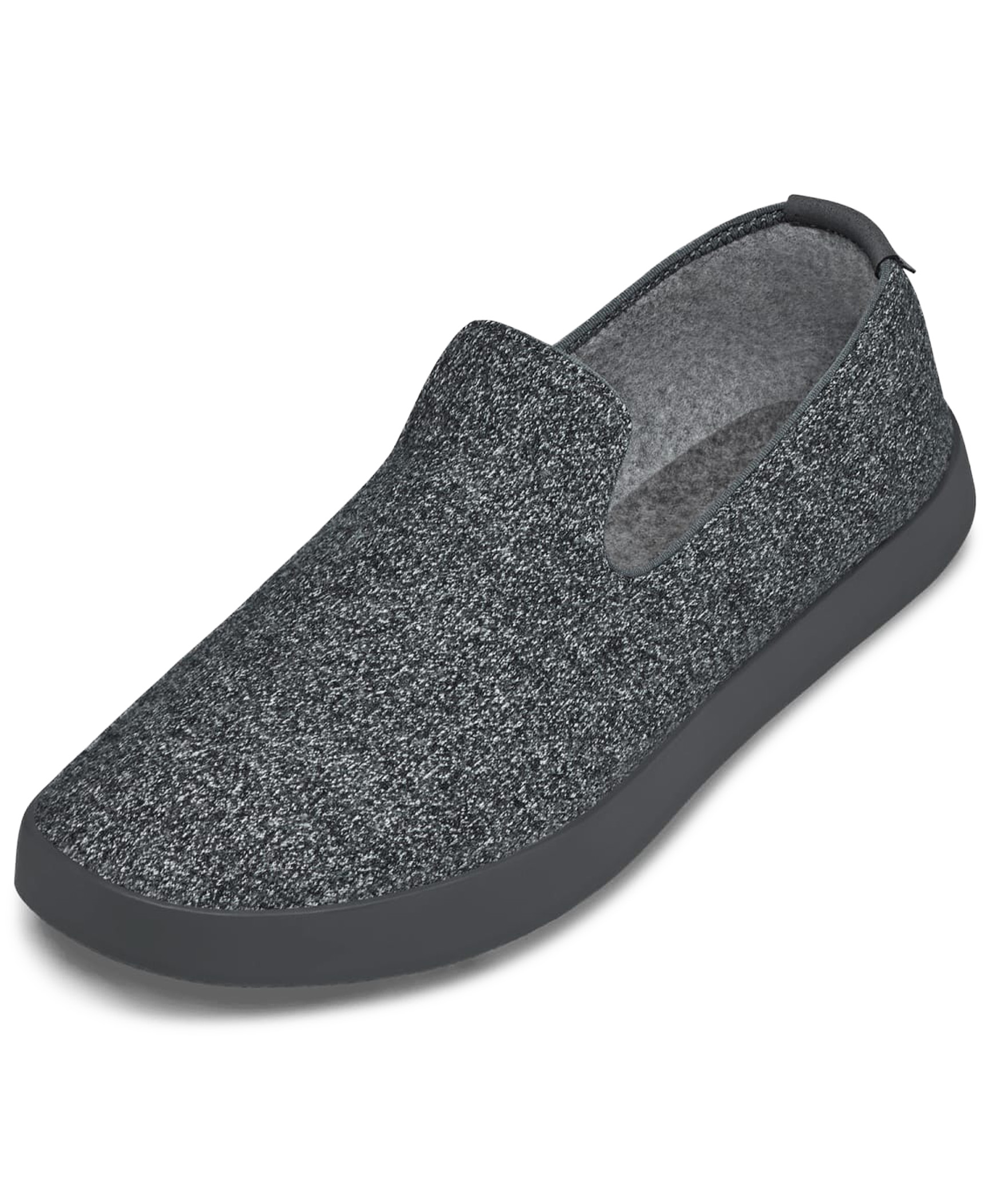Not enough legroom. People climbing over you. Noise from movies and video games and screaming children. Sunlight pouring in your neighbor’s window at 35,000 feet. With all the distractions and hassles of air travel, sleeping on planes can sometimes feel impossible.
If you struggle to get some shuteye each time you take to the air, you’re not alone—but choosing the right seat, bringing the right gear, and making a few small changes in your flying habits could help you sleep better on your next flight. Read on for our travel-tested tips for sleeping on planes.
Choose Your Seat Wisely
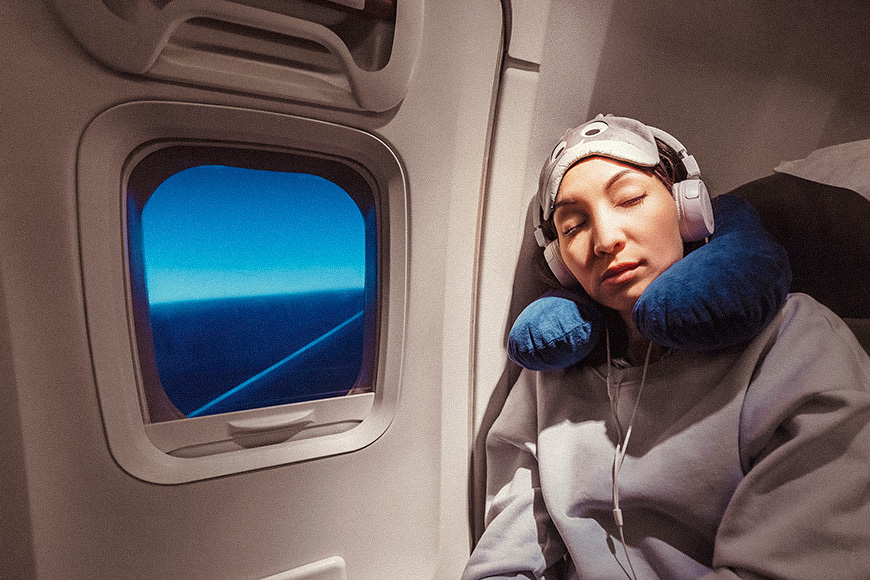
Your seat location could be one of the most important factors in how well—or how poorly—you sleep on a plane. Try to get a window seat if possible; it will give you something to lean against and get you out of the way of other folks in your row, who won’t have to scramble over you each time they need to use the bathroom. You’ll also have some control over the window shade.
Think twice about bulkhead or exit row seats. Sure, the extra legroom is great, but some exit row seats do not recline (so that they won’t be an obstruction in case of emergency), and some bulkhead seats have armrests that can’t be raised. Sleeping in one of these is like sleeping in a straitjacket, especially if the seat next to you is unoccupied, or worse, the entire row is empty (as happened to me on a flight from Australia—14 hours in the air, an empty row, and the worst flight I’ve ever had). What could have been a nice sleep nook is now more like, well, an airplane seat.
Travel writer Andrea Rotondo also cautions against bulkhead seats because they “are often reserved for families traveling with babies or young kids, [and] can be noisy.”
Another area to avoid is the last row of the plane. Again, the seats may not recline, and they’re often located right near the lavatories—where both noise and odor could be an issue. See The Worst Seats on a Plane (and How to Avoid Them) for more info.
Aside from the very last row, there are pros and cons to sitting near the front of the plane vs. sitting near the back. Seats near the rear of the plane may be noisier due to the planes’ engines and clink-clanking from the galley, but it’s also more likely that you’ll have a couple of seats (or even a whole row) to yourself back there—and the extra space could make up for the extra noise.
To help you choose your seat, check out SmarterTravel’s sister site, SeatGuru.com, which offers color-coded seating charts for nearly every plane on every airline.
Cut Down on Your Carry-Ons
If you have two full-size carry-ons, one might end up under your feet, limiting your legroom and making it harder to sleep. Instead, pack lighter so you can fit everything into a single bag. Keep a few small necessities near the top of the bag—a book or magazine, a snack, a bottle of water. Before you stow your bag in the overhead compartment, pull out the important items that you’ll need during the flight and put them in the back of the seat in front of you.
Editor’s note: The Federal Aviation Administration (FAA) cautions against the stowage of personal items in the seatback pocket for safety reasons, but states, “If small, lightweight items, such as eyeglasses or a cell phone, can be placed in the seat pocket without exceeding the total designed weight limitation of the seat pocket or so that the seat pocket does not block anyone from evacuating the row of seats, it may be safe to do so.” Keep the items you stow in the seatback pocket to a minimum, and be aware that flight attendants may ask you to put the items back into your carry-on bag.
Skip the Caffeine
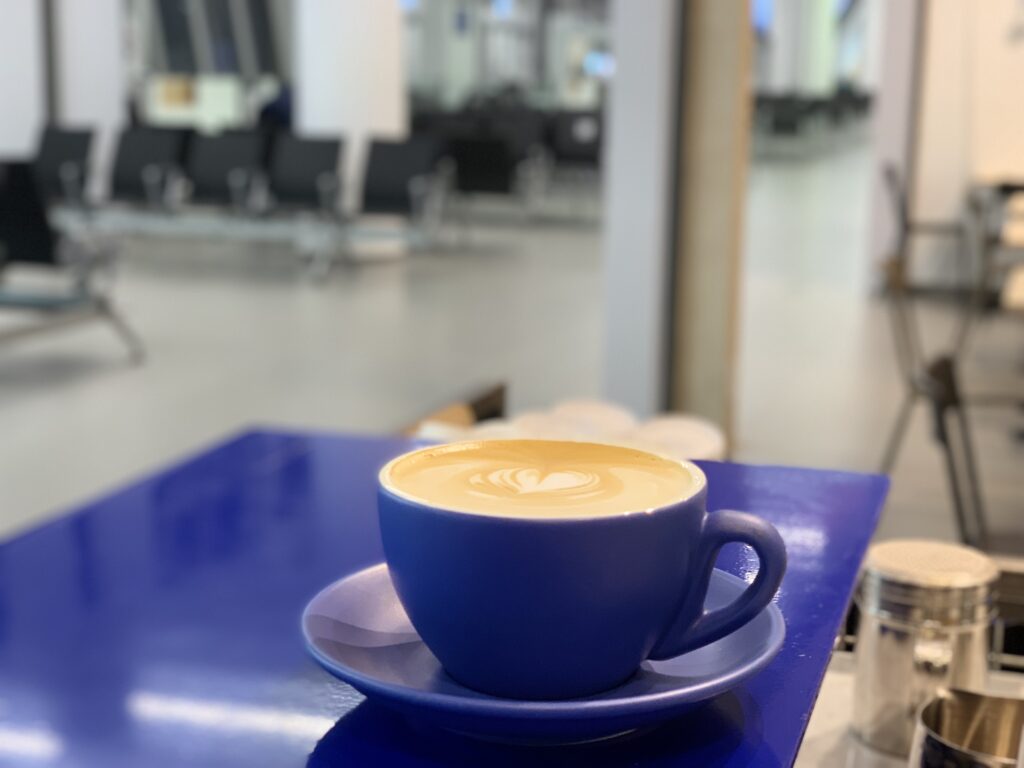
Especially on a daytime flight, where even the view out the window can be a distraction, you’ll find it much harder to sleep if you have caffeine coursing through your veins. Avoid the temptation to have a cup of coffee or a soda before boarding, and stick to water or juice when the drink cart comes around.
Try a Sleep Aid
I am not a doctor and will not attempt to advise you on which drugs you should take as sleep aids. Consider asking your own physician about the following medications.
Over-the-counter options include Dramamine (bonus: it will also help if you have motion sickness), melatonin (a hormone that can help with sleep and prevent jet lag), any antihistamine containing diphenhydramine (such as Benadryl), and medicines designed for insomnia, like Unisom or ZzzQuil. One editor at SmarterTravel’s sister site, What to Pack, swears by valerian tea.
Be sure to test-drive any pills you’ve never taken at least a few nights prior to your flight—medicines can have the opposite effect for some people.
If you’re truly desperate, ask your doctor for a prescription sleep aid. Be warned, though, that medicines such as Ambien have side effects that include memory loss, hallucinations, “sleep-driving,” “sleep-eating,” and other adverse reactions—something to think about before you pop one at 30,000 feet.
For more information, see Natural Sleep Aids to Try When You Want to Avoid Medications and The Best Over-the-Counter Sleeping Pills for Long-Haul Flights.
Stake Your Claim on Blankets and Pillows—or Bring Your Own
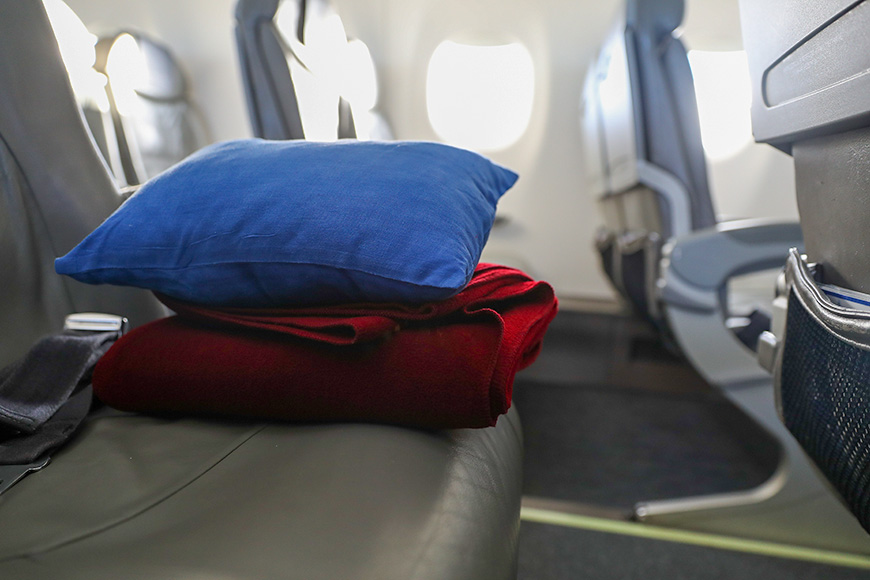
There never seem to be enough blankets and pillows to go around. Board early and stake your claim. If there isn’t a set in your seat, immediately ask the flight attendant for one.
Better yet, bring your own. Even if you are offered a blanket, it may not be a clean one, as many airlines reuse them without washing them between flights. I recommend packing a travel blanket. You’ll feel toasty warm and be able to rest comfortably. If your plane is overheated, rolled-up blankets can double as lumbar support, pillows, or even a footrest.
Bring a Neck Pillow
Many travelers swear by their supportive neck pillows. Personally, I’ve found few neck pillows that really work the way they’re designed. They are too big in the back, which tilts my head forward, and then offer no support under my chin to hold up my noggin that has just been pushed forward. I turn them around; this works like a charm.
Are you a stomach, side, or back sleeper? Pick a travel pillow that allows you to most closely recreate your sleeping style in a limited space. For example, if you’re a stomach sleeper who has no shame, you might want to consider the Skyrest Travel pillow, which should let you sleep peacefully, perhaps unaware of the mocking laughter from other passengers. Side sleeper? Try the unique Travelrest pillow. And back sleepers can try the Travelon First Class Sleeper.
Free Your Feet
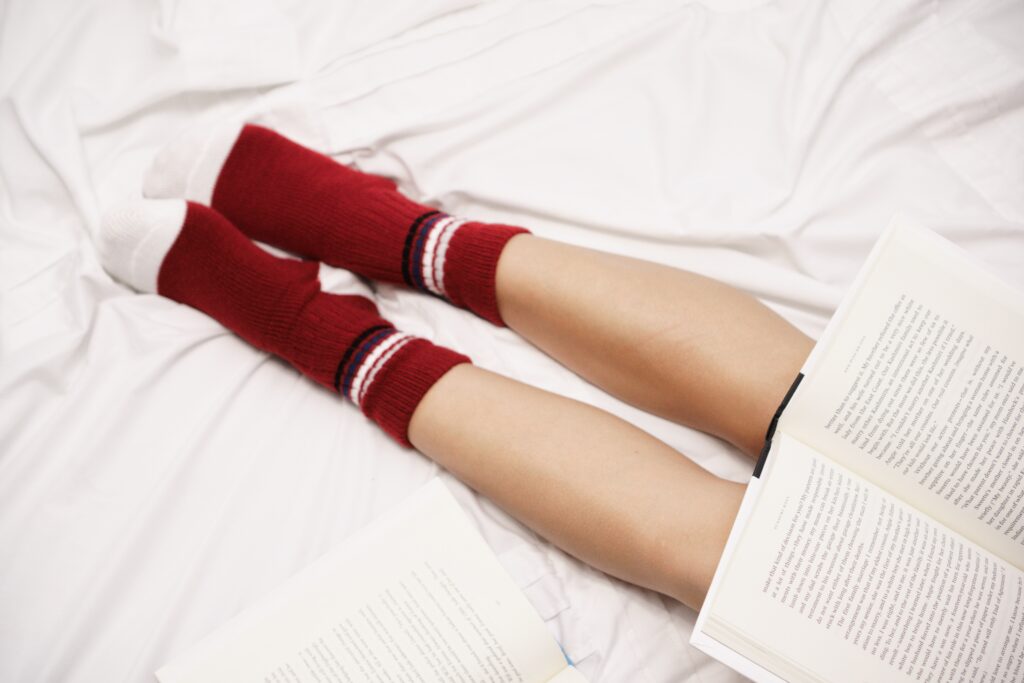
This is a controversial subject. Some people slip their shoes off as soon as they get on a plane; others wouldn’t dream of it. Further, there’s the issue of keeping your circulation flowing; going barefoot permits your feet to swell.
Take care of your dogs and wear clean socks. Opt for shoes you can slip on and off easily—this way you’re not pulling at shoelaces and flinging elbows mid-flight. On long overseas flights, consider wearing compression socks to encourage circulation.
Use Headphones with Discretion
Save yourself the five bucks and catch some more winks by passing on the airline’s headphones. TV and movies can keep you up the entire flight. On one transatlantic flight a few years back, I sat awake until three in the morning watching Man on the Moon; I laughed out loud and definitely enjoyed myself, but the next day in Europe, I yearned deeply for the two hours of sleep I lost to Jim Carrey’s depictions of Andy Kaufman and Tony Clifton.
On the other hand, listening to soothing music can help tune out distractions and lull you into a peaceful sleep. For best results, try Bose’s popular noise-canceling headphones; they’re pricey, but they’re the best product on the market for frequent flyers looking to escape engine noise and other in-flight distractions. (Ear plugs are a less effective but much cheaper alternative.)
Make Sure You Won’t Be Disturbed
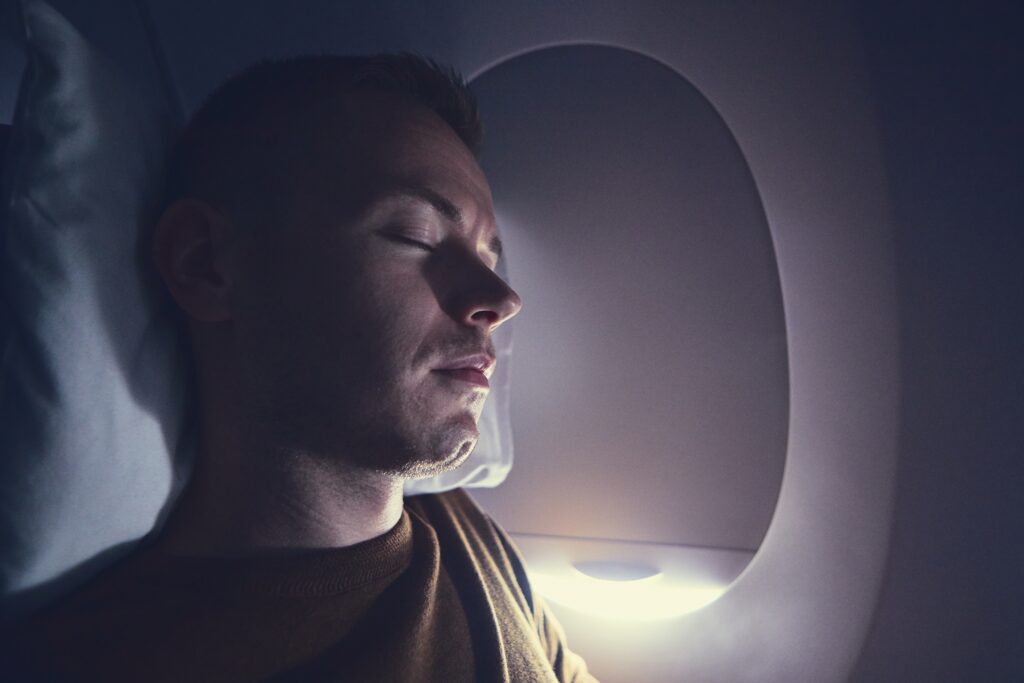
Jayne Bailey Holland, a former airline staffer, recommends notifying your flight attendant that you want to sleep—that way he or she will know not to disturb you when the drink or snack cart comes around. If you’re under a blanket, be sure your seat belt is buckled over top of it so the belt is visible at all times.
Dress Comfortably
Will your flight be hot or cold? It’s impossible to predict, so wear layers. Don’t wear anything tight, as that can restrict your circulation (which is already at risk in a tight airplane seat). If you’re on a long-haul flight, consider bringing pajamas to change into—you might find it easier to fall asleep in your usual jammies than a business suit.
Recline Your Seat—But Be Courteous
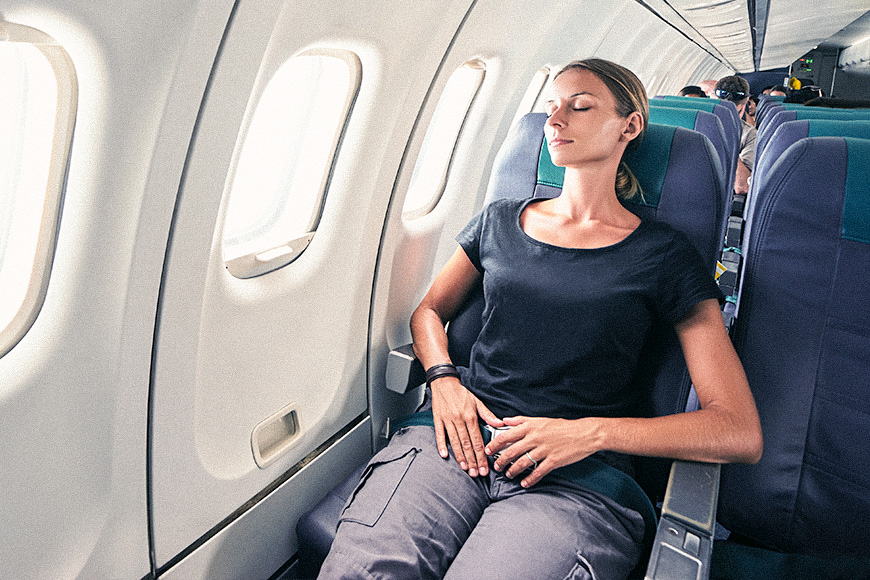
On a night flight, expecting someone not to sleep is like asking them to put down their window shade during a flight over the Grand Canyon or Haleakala. Ideally, everyone has the same idea and seats will tip backward soon into your flight.
However, you should always look behind you to make sure the coast is clear before pushing the button to put your seat back. It gives the person behind you a heads up if they have coffee in front of them or have their head down on the tray table.
Simple common courtesy applies here.
Stay Away from the Light
The animated flash of movie screens, reading lights, cabin lights, sunlight bursting in on an eastbound flight—all can disturb your slumber. Get yourself an eye mask. Some airlines provide them, but it’s best to keep one in your traveling kit just to be safe.
When It’s Time to Wake Up …
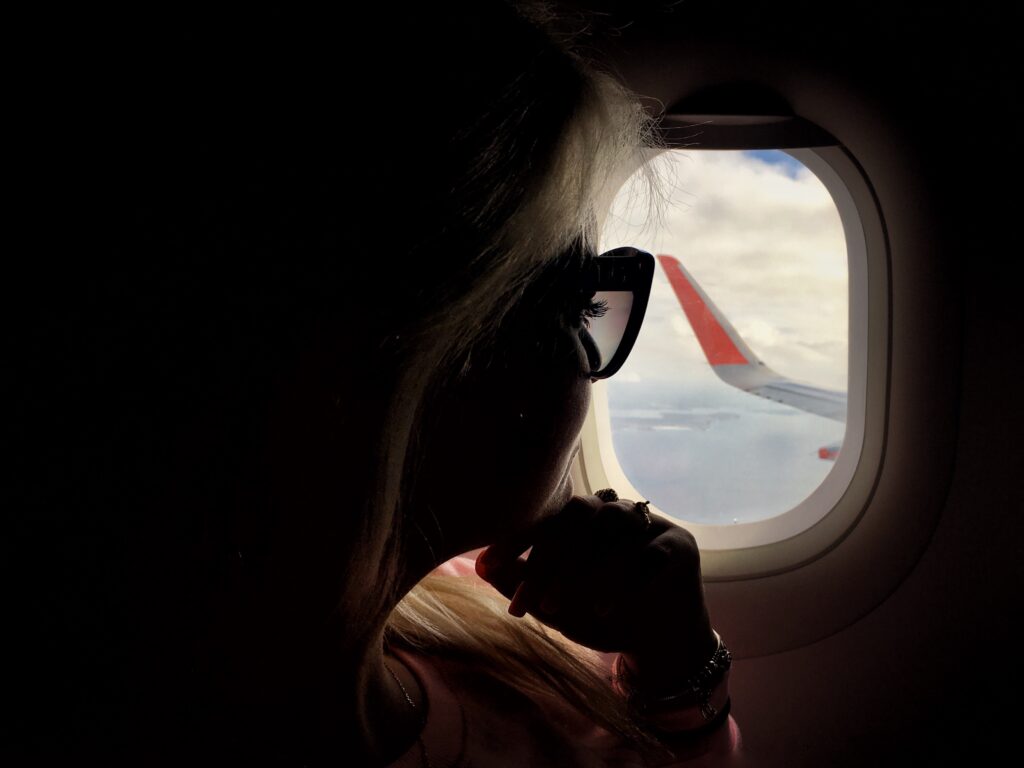
The worst part of sleeping is waking up, I always say. It’s even worse on a plane, when you’re waking up to fluorescent lights, luggage carousels, and sunshine so bright you can practically hear it.
If it’s a long flight, consider setting a watch or cell phone alarm for 45 minutes before you have to land. That gives you time to go to the restroom, gather your gear, tie your shoes, watch the approach to your destination, drink a cup of coffee, and walk off the plane fully awake.
Reaching your destination fully rested, whether you indulge in a short and sweet nap or a full rack en route, always beats lurching around an airport tired and crabby. Grab your 40 winks (and then some) in flight, and you’ll be a happier traveler.
More from SmarterTravel:
- What Not to Wear on a Plane (and What’s Perfectly Fine)
- Stuck in the Middle Seat? Read These Tips
- 10 Ways to Survive a Long-Haul Flight
Editor’s note: This story was originally published in 2017. It has been updated to reflect the most current information. Caroline Morse Teel contributed to this story. A previous version of this story had the incorrect title of a 1999 film about Andy Kaufman. It has been corrected.
We hand-pick everything we recommend and select items through testing and reviews. Some products are sent to us free of charge with no incentive to offer a favorable review. We offer our unbiased opinions and do not accept compensation to review products. All items are in stock and prices are accurate at the time of publication. If you buy something through our links, we may earn a commission.
Related
Top Fares From
Today's Top Travel Deals
Brought to you by ShermansTravel
Peru: 8-Night Trip, Incl. Machu Picchu...
Great Value Vacations
 vacation
$2083+
vacation
$2083+
15-Night Transatlantic Cruise from New York...
Norwegian Cruise Line
 cruise
$928+
cruise
$928+
Shop and Save with Country Inns...
Patricia Magaña
 Hotel & Lodging Deals
Hotel & Lodging Deals
